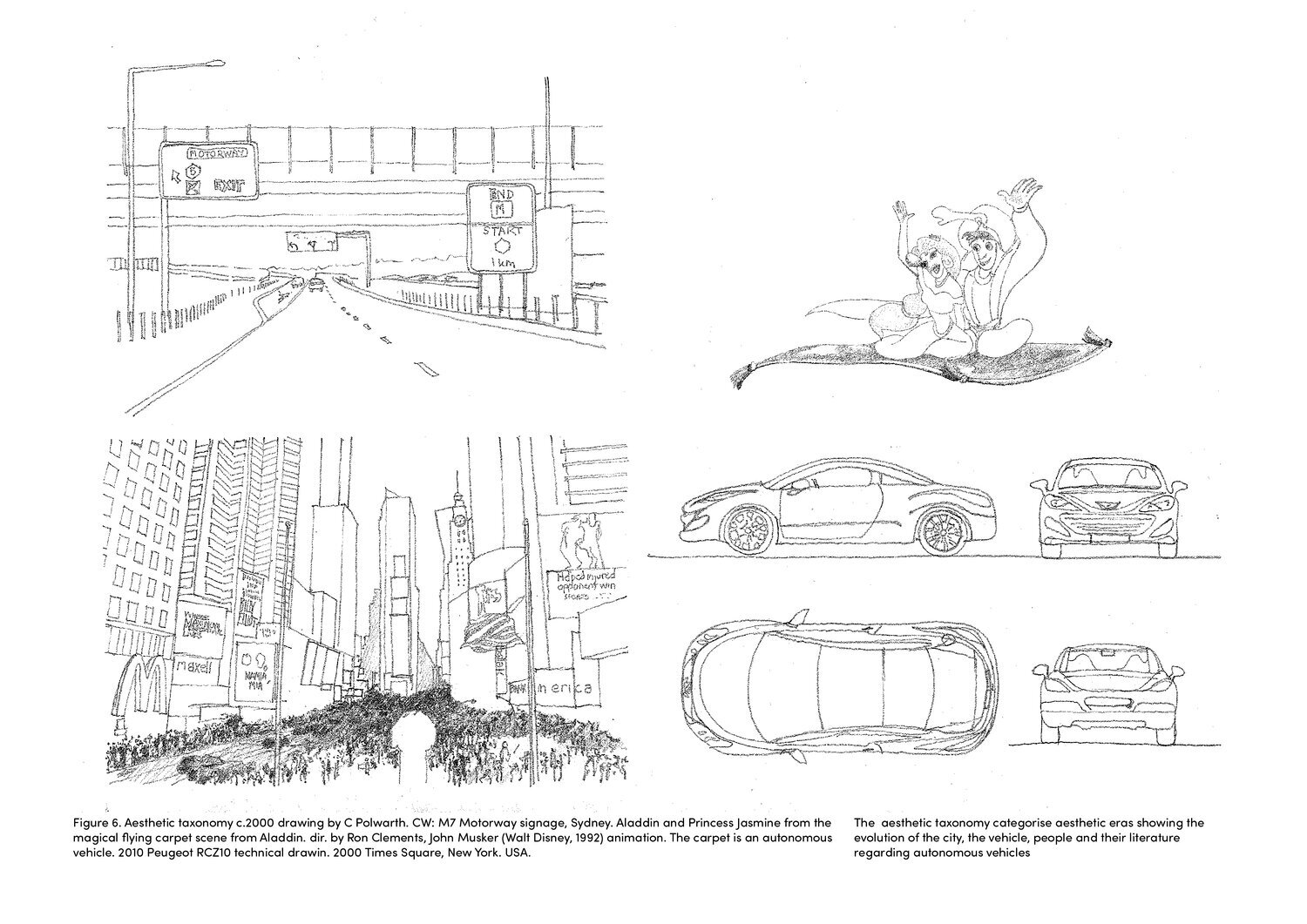Investigating the Future of our Roads
Driverless Vehicles, cities, people and signs
In 2015, while studying a Master of Art and UNSW, Colin commenced research into driverless vehicles, cities, people and signs integrating his extensive experience in transport-based architecture and visual arts.
What started out as an inquiry into the authors, designers of our existing roads signs expanded into a research on signs for a future driverless environment. This culminated in a capstone project under the mentorship of Professor Ian Howard. Assisted by Sulman Art Prize winning artist Joan Ross, Colin explored an evolution of the visual language of signs for a new era in road-based transport. His capstone exhibition held in the UNSW Black Box included some 30 paintings, 20 watercolours and 10 oil paintings with a supporting abstract and semiotic schedule. The paintings examined a novel graphic intended to harmonise with a built environment or landscape context, while maintaining an elegant, iconic presence needed for safety in the road environment. LINK to VIDEO
The background - Vienna Convention on Road Traffic
In 1948, the Convention on Road Traffic had started its work, but many countries had not ratified the convention until 1977. Most road signage prior to the 1960s was designed by safety committees and only became entrenched in the United Nations, Vienna Convention on Road Traffic in 1968. This convention includes international road signage, the intention of global signage system.
The origins of some road signs extend back into the early 1900’s when signs were first used to assist early drivers on the road, and in response to high accident rates in the vehicle development years 1890 - 1930. Motorways in America were some of the first road systems to use signs, however mostly without national (or international) consistency. Road signs of the 1930s - 1960s show a huge variety and inconsistency of appearance and location around the world. Colin’s research is investigating the historic evolution of signs, vehicles and the city, the international research reviews Sydney, London, New York, Paris, Sao Paulo, Cape Town, New Delhi and Hong Kong.
Jock Kinneir, Margaret Calvert and the M1 influence
In 1957, Jock Kinneir was appointed head of signs for Britain's roads, he employed graphic designer Margaret Calvert, to assist him design new road signage as part of a visual and empirically tested study for the M1 Motorway which opened outside London, UK. The commission grew over the years and included many of the iconic signs such a ‘school children nearby’ and ‘men at work’, still seen on the roads today. The M1 signage was expanded onto other motorways in the UK. The design principles were so successful they were deployed throughout Europe, America and eventually became the basis for international standards, which are used to this day around the world. Dame Margaret Vivienne Calvert was awarded an OBE by Her Majesty Elizabeth II the 2016 Birthday Honours for services to typography and road safety. Calvert during her illustrious career as a designer and pedagogue went on to teach graphic design at the Royal College of Art, London.
Ongoing research
Colin’s project researches the influence of a fully driverless environment on human behaviour, the city and signage in an integrated manner. The future fully driverless vehicle environment (perhaps excluding motorbikes) is likely to take many years to achieve. The technology, and its acceptance as superior to human driving by the community has still to be achieved. Part of the research is an investigation into the social history of vehicles and specifically autonomous vehicles – to gain a better understanding of the cultural and social history that will inform community and government acceptance of driverless vehicles in the public realm.
The public realm is owned by society at large, it is controlled and maintained by governments on our behalf. It is critical that the public realm is safe, environmentally sensitive, and culturally enriching. Admission of the self-driving, novel technology into the public realm is a serious, sobering and significant ethical issue for the community.
A social history
Colin is investigating the role of science fiction movies, social events such as unionisation and militarisation and autonomy which have created a cultural history. This will assist him in understanding the influences between vehicles, behaviour and semiotics. This research aims to assist communities, government and industry realise a fully driverless vehicle environment. Colin is also researching semiotics, this research will take more time.
The driverless initiative aims to make road-based transport safer than the current driven system, it is intending to save lives and reduce injury, be more efficient and productive with less pollution and climate change impacts and to be less chaotic than current traffic, all for the benefits of future generations. The research findings will be updated a regular basis and may change direction depending on the evidence.
The social history includes some interesting findings on artificial intelligence, morality and ethics which will be important social determinants when the driver is, in reality, a series of algorithms.
Please visit this website again for future updates.

